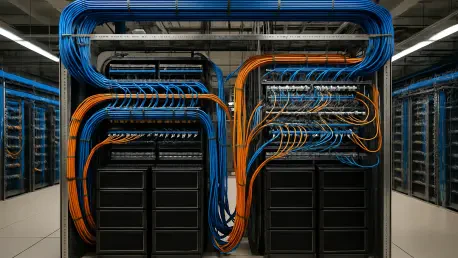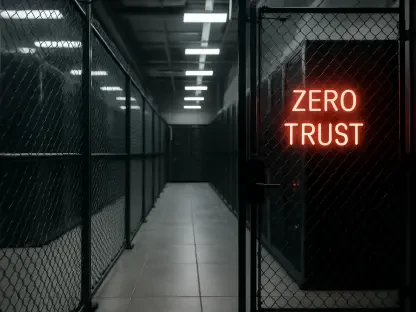The internet, often hailed as the lifeblood of the digital age, is facing a critical reckoning as stakeholders clash over who should bear the financial weight of its ever-expanding infrastructure. With data consumption skyrocketing due to streaming services, social media platforms, and cloud-based applications, the strain on global networks has never been greater, prompting heated discussions about fairness and responsibility. At the center of this storm is the question of whether Big Tech giants—such as Google, Amazon, Meta, and Netflix—should contribute to the costs of building and maintaining these vital systems, or if telecom operators and end users should continue to shoulder the burden. Dubbed the “fair share” debate, this issue transcends mere economics, touching on foundational principles like net neutrality and the future of digital innovation. As the stakes rise, the global community is grappling with how to balance the needs of infrastructure sustainability with the ethos of an open internet, setting the stage for a transformative policy battle.
The Tension Between Telecoms and Tech Giants
The heart of the fair share debate lies in a stark divide between telecommunications operators and over-the-top (OTT) service providers like YouTube and Spotify. Telecom companies contend that a small group of tech behemoths generates a massive share of internet traffic, compelling them to invest heavily in network upgrades and maintenance to keep up with demand. They argue that it’s only equitable for these platforms to contribute financially, as the current model places an unfair load on network providers who bear the brunt of infrastructure costs. This perspective paints the issue as a matter of basic fairness, asserting that those who profit most from robust networks should help sustain them, especially as data usage continues to surge with high-bandwidth services like 4K streaming and virtual reality applications. Without such contributions, telecoms warn, the quality and accessibility of internet services could suffer, potentially stalling progress in underserved regions.
In contrast, Big Tech firms present a compelling counterargument, emphasizing the mutual benefits their services bring to the digital ecosystem. They assert that platforms driving high traffic also fuel demand for internet connectivity, which ultimately boosts telecom revenues through increased subscriptions and network expansions. Imposing additional fees, they caution, could disrupt the open nature of the internet, where innovation thrives on equal access. Such financial burdens might deter smaller startups from entering the market, skewing competition in favor of established players and possibly passing costs onto consumers through higher subscription fees. Moreover, tech companies highlight their existing investments in content delivery networks and other technologies that alleviate network strain. This clash of views underscores a deeper philosophical rift about the internet’s core principles, raising critical questions about how to equitably fund a resource that underpins modern society without compromising its accessibility or dynamism.
Exploring Potential Funding Models
As the fair share debate intensifies, several frameworks have been proposed to address the funding imbalance between telecoms and OTT providers. One prominent idea is the interconnection model, which advocates for negotiated fees between content providers and network operators based on traffic exchange. This approach offers flexibility, allowing parties to tailor agreements to specific circumstances, such as traffic volume or regional needs. Proponents argue that it fosters collaboration and could lead to efficient resource allocation without heavy-handed regulation. However, critics point out that such negotiations might favor larger tech firms with more bargaining power, potentially marginalizing smaller players and creating uneven outcomes. The model’s success hinges on the willingness of both sides to compromise, a challenging prospect given the current adversarial climate surrounding infrastructure funding.
Another approach gaining traction is the universal service contribution model, which would impose taxes on OTT providers proportional to the traffic they generate, with proceeds funneled into infrastructure development. This system aims to create a broad-based funding pool that could support network expansions, particularly in rural or underserved areas, promoting digital equity. Supporters see it as a sustainable way to distribute costs across the digital ecosystem, ensuring that those who benefit most from robust networks contribute accordingly. Yet, opposition remains strong, with concerns that such taxes could be seen as a penalty on innovation, discouraging investment in new services. There’s also the risk of bureaucratic inefficiencies in managing and distributing the funds, which could undermine the model’s intent. A third option, the regulated peering model, proposes fixed interconnection prices to standardize costs, but it faces similar debates over fairness and implementation. Each framework presents unique trade-offs, leaving policymakers with the daunting task of finding a balanced path forward.
Regional Differences in Policy Approaches
The fair share debate unfolds with striking variations across the globe, reflecting diverse regulatory environments and infrastructure priorities. In Europe, there’s significant momentum toward mandating contributions from Big Tech, driven by telecoms’ persistent calls for fairness in funding network upgrades. However, this push is tempered by a deep commitment to net neutrality, with regulators and member states wary of policies that might create a tiered internet or stifle digital growth. The upcoming Digital Networks Act could provide clarity, but for now, caution dominates the conversation, as European stakeholders seek to protect the open internet while addressing infrastructure costs. This delicate balancing act illustrates the region’s broader struggle to align progressive digital policies with practical economic needs, ensuring that any intervention doesn’t inadvertently harm consumers or smaller market entrants.
Elsewhere, South Korea stands out as a trailblazer, having implemented regulations like the so-called “Netflix law” that require content providers to invest in streaming quality and network stability. This proactive stance offers a potential model for other nations, demonstrating how targeted policies can compel OTT providers to share infrastructure burdens without broadly undermining internet freedoms. Meanwhile, in the United States, the debate is mired in political complexities, with recent opposition framing fair share proposals as potential trade barriers that could strain international relations. In contrast, regions like Latin America and India focus on digital equity, exploring how contributions from tech giants could bridge connectivity gaps, while Australia’s robust public broadband investment through government initiatives reduces the urgency of the issue. These disparities highlight a crucial reality: solutions must be tailored to local contexts, as a uniform global policy seems neither feasible nor desirable given the unique challenges each region faces.
Net Neutrality and the Risk of a Tiered Internet
One of the most contentious aspects of the fair share debate is its intersection with net neutrality—the principle that all internet traffic should be treated equally, regardless of source or content. Critics of funding mandates for Big Tech argue that such policies could pave the way for a tiered internet, where providers prioritize traffic from companies able to pay higher fees, effectively sidelining smaller competitors and limiting consumer choice. This concern resonates deeply in regions like the European Union, where safeguarding an open digital environment is a cornerstone of policy. The fear is that financial contributions, if not carefully structured, might incentivize telecoms to throttle or deprioritize traffic from non-paying entities, eroding the democratic nature of the internet and creating barriers to innovation for startups and independent creators who lack the resources of industry giants.
Telecom operators, however, offer a different perspective, stressing that without contributions from high-traffic OTT providers, they may struggle to fund the network expansions needed to handle growing data demands. This funding shortfall could exacerbate digital divides, particularly in remote or economically disadvantaged areas where infrastructure investment is already limited. They argue that a failure to address cost disparities risks undermining connectivity goals, as the quality and reach of internet services could stagnate without adequate resources. Striking a balance between these competing priorities remains elusive, as any solution must ensure that infrastructure sustainability doesn’t come at the expense of equal access. The challenge for regulators is to craft policies that distribute costs equitably while preserving the fundamental ethos of net neutrality, a task that demands both innovative thinking and rigorous economic analysis to avoid unintended consequences.
Looking Ahead: Pathways to Equitable Solutions
Reflecting on the fair share debate, it becomes evident that the digital landscape has reached a critical juncture where past funding models no longer suffice. Telecom operators have consistently highlighted the economic imbalance, bearing substantial costs to support networks strained by Big Tech’s traffic, while OTT providers emphasize their role in driving connectivity demand. The global community has witnessed a spectrum of approaches, from South Korea’s regulatory interventions to Europe’s cautious deliberations, each revealing the complexity of aligning financial fairness with internet openness. The discourse has underscored that net neutrality remains a non-negotiable principle for many, even as infrastructure needs grow urgent.
Moving forward, actionable steps emerge as essential to resolving this impasse. Policymakers should prioritize collaborative frameworks, bringing telecoms, tech firms, and regulators together to design data-driven solutions tailored to regional dynamics. Investing in transparent studies to assess traffic impacts and funding needs could guide equitable contribution models without risking innovation. Additionally, exploring hybrid approaches—combining elements of interconnection agreements and universal contributions—might offer a balanced path, ensuring shared responsibility. The focus must remain on fostering a sustainable digital ecosystem where infrastructure thrives alongside accessibility, setting a precedent for future tech policy challenges.









